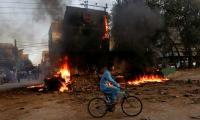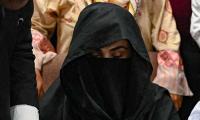In my write up, ‘Indian Indigenous Education’, published in these pages on March 21, 2016, I tried to confront some popular stereotypes that pre-British India was a land of illiterates and that there was no proper school network in India, priorto the arrival of the East India Company.
The article focused on indigenous educational practices in Madras, Bombay and Bengal and, with the help of relevant data, demonstrated that there was a comprehensive and robust school network in India before the arrival of East India Company.
This article will further elaborate on the theme of indigenous educationby studying the educational practices in pre-British Punjab. Punjab was different from other parts of India, as it was annexed by the East India Company much later, in 1849. In Punjab, like many other parts of India, the rich people, Zameendars, and ‘ashrafia’ (the elite) had their own private system of education. Instead of sending their children to schools, they would hire ‘ataleeq’ (tutors) for their children at homes. These tutors, along with reading and writing, used to teach manners and values as well. Thus, besides those that went to schools, a large number of children were receiving education in their homes.
In Punjab, there was a culture of reverence for education and teachers. The affluent people of the village would help teachers and schools by providing them support for their sustenance. In villages, it was common that religious education was imparted free of cost to males and females separately. One of the most comprehensive accounts of educational practices in Punjab was given by G W Leitner in his book, ‘History of Indigenous Education in India’.
Leitner was a devoted educational scholar and linguist who was the founding principal of Government College, Lahore and was also instrumental in the establishment of Punjab University. Leitner’s book, published in 1882, gives a detailed account of different kinds of schools. His survey also included information about the location of schools, the qualification of head teachers, the number of teachers, the monthly income of teachers, the subjects taught in schools and the books used there.
The educational practices in pre-BritishIndia were intertwined with the social and cultural practices of the masses. According to Leitner, “There was not a mosque, a temple, a dharmsala, that had not a school attached to it, to which the youth flocked chiefly for religious education.” It is important to note that there was a close liaison between the three social institutions of family, school, and religion. What was the nature of the schools, in terms of their functions? How did language act as a distinguishing feature in categorising schools? Did religion play a part in segregation of schools?
The answers to these questions can be found in the categories of schools. Leitner divides the indigenous schools into different categories: ‘maktabs’(Persian schools for Muslims, open to all sects), madressahs (Arabic schools for basic to higher level education), ‘patshalas’ (taught Sanskrit, usually for religious purposes), Gurmukhi schools (taught Gurmukhi, generally to Sikh students), and ‘mahajani’ schools (schools for trading community). It is important to note that languages, religions and functions acted as distinguishing features. Languages, such as Persian, Urdu, Sanskrit and Gurmukhi,acted as the identity markers of different ethnic groups.
As mentioned earlier, education was encouraged at thecommunity level in Punjab. What could be the number of students studying in schools? Keeping in view the depth and breadth of schools, it was not easy to get an exact number of pupils receiving education in the province of Punjab. According to Leitner, the lowest computation gives us 330,000 pupils in schools of various denominations. These students were exposed to reading, writing and some method of some computation. The levels of study would vary from basic to higher education and linguistics modes would largely include Persian, Sanskrit, and Gurmukhi.
Lahore was a hub of educational activities in terms of number of schools, teachers and pupils. According to the Statement of Settlement Report of the Lahore District for 1860, quoted by Leitner, in Lahore alone there were 576 schools, in which 4,225 pupils were studying. Besides Lahore, schools were readily available in other parts of the province. Another important point that needs to be highlighted is the student to school ratio.Leitner referred to the Settlement Report of 1852, according to which there was a school for every 1,965 male inhabitantsin the district of Hushiarpur. The model of education prevalent in Punjab was cheap and thus accessible to masses.
The curricula and text books would vary, depending on the nature of the school and the level of study. Leitner gives a detailed account of the subjects taught in schools and the books used for teaching those subjects. In the Arabic department of ‘deoband’, for instance, the range of subjects included grammar, literature, philosophy, rhetoric, astronomy, law, logic, philosophy, arithmetic and geometry.
The above account suggests that there was an effective system of schooling in pre-British Punjab. There were different types of schools for various subjects, languages and ethnic groups. These schools had set curricula, aimed atimparting knowledge, skills and values to the students. The educational fees were nominal and education was available at village level.
The writer is an educationist.
Email: shahidksiddiqui@gmail.com
MPAs ask for their salaries and benefits to be at par with high court judges and exempt from tax
This system fosters and places premium on VIPs, facilitating VIP culture, which is alive and kicking
Imagine this waste covering over 15,500 cricket stadiums, piled three meters deep every year
If there is one thing that can be gleaned from politics today, it is that we no longer speak same language
Postman argues that “typographic mind” was yielding to “televisual mind”
Pakistan is well poised to meet opportunities that Artificial Intelligence will offer for developments in industries







